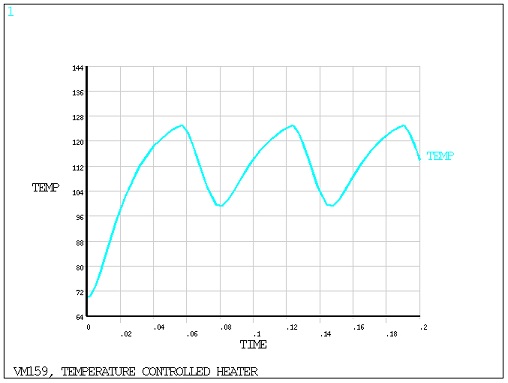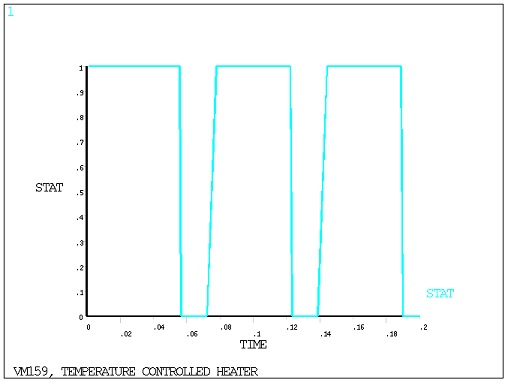VM159
VM159
Temperature-controlled Heater
Test Case
An assembly consisting of a heater with capacitance C1 and surface area A1 is surrounded
by a box having capacitance C2 and surface
area A2. The box is initially at a uniform
temperature To. The heater, which supplies
heat at a rate q, is turned on and remains on until the surrounding
box temperature reaches a value Toff. The
heater then switches off until the box temperature lowers to Ton and then switches on again. Determine the temperature
response of the box and the heater status vs. time.
Analysis Assumptions and Modeling Notes
The conductivity resistance is assumed to be small compared
with the thermal capacitance for both the heater and the box. A time
of 12 min (0.2 hr) is arbitrarily selected to allow several cycles
of response. The integration time step is chosen to be 0.001 and
automatic time stepping is used to reduce the number of substeps.
The nodes are arbitrarily located at the origin.




